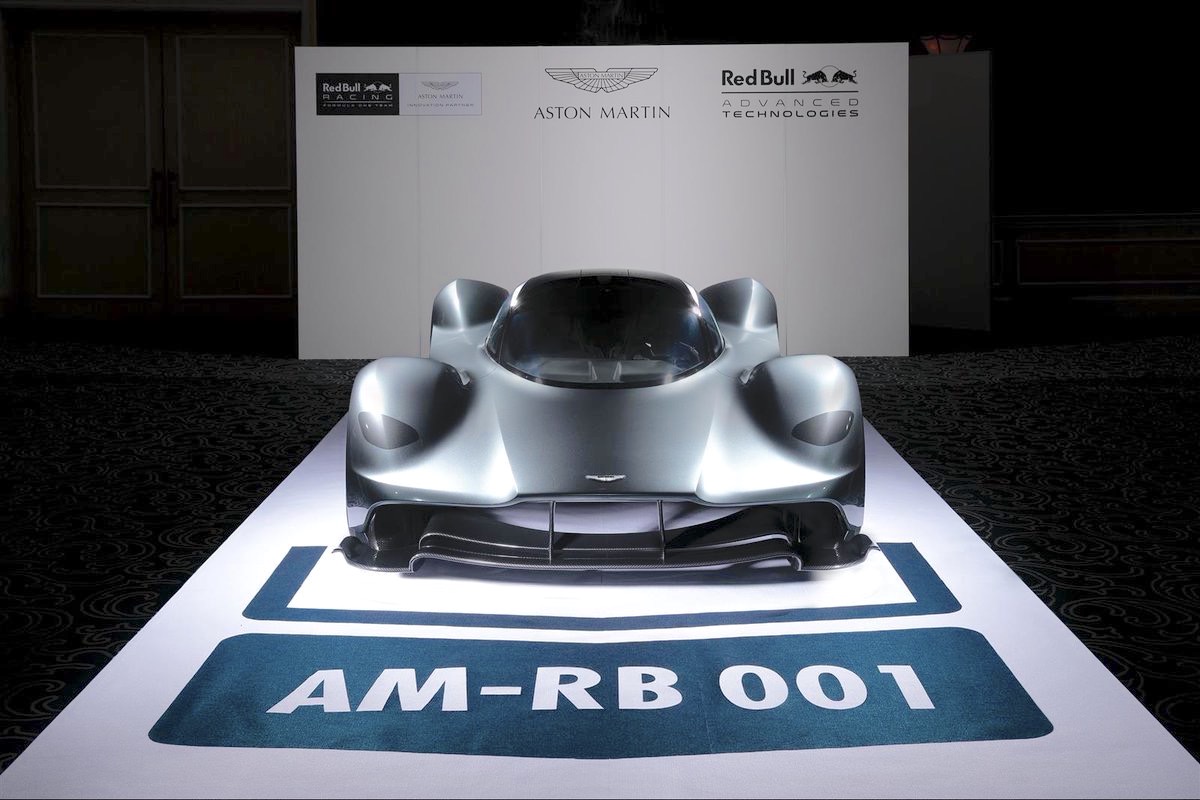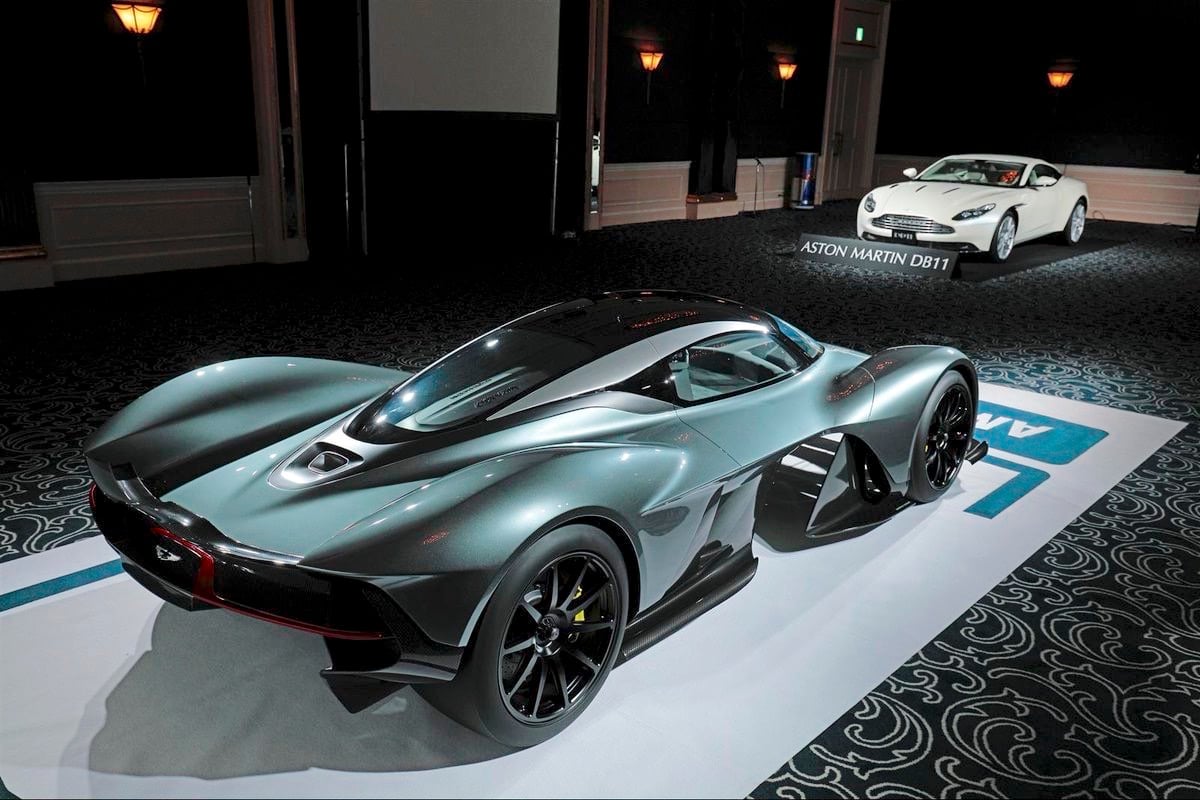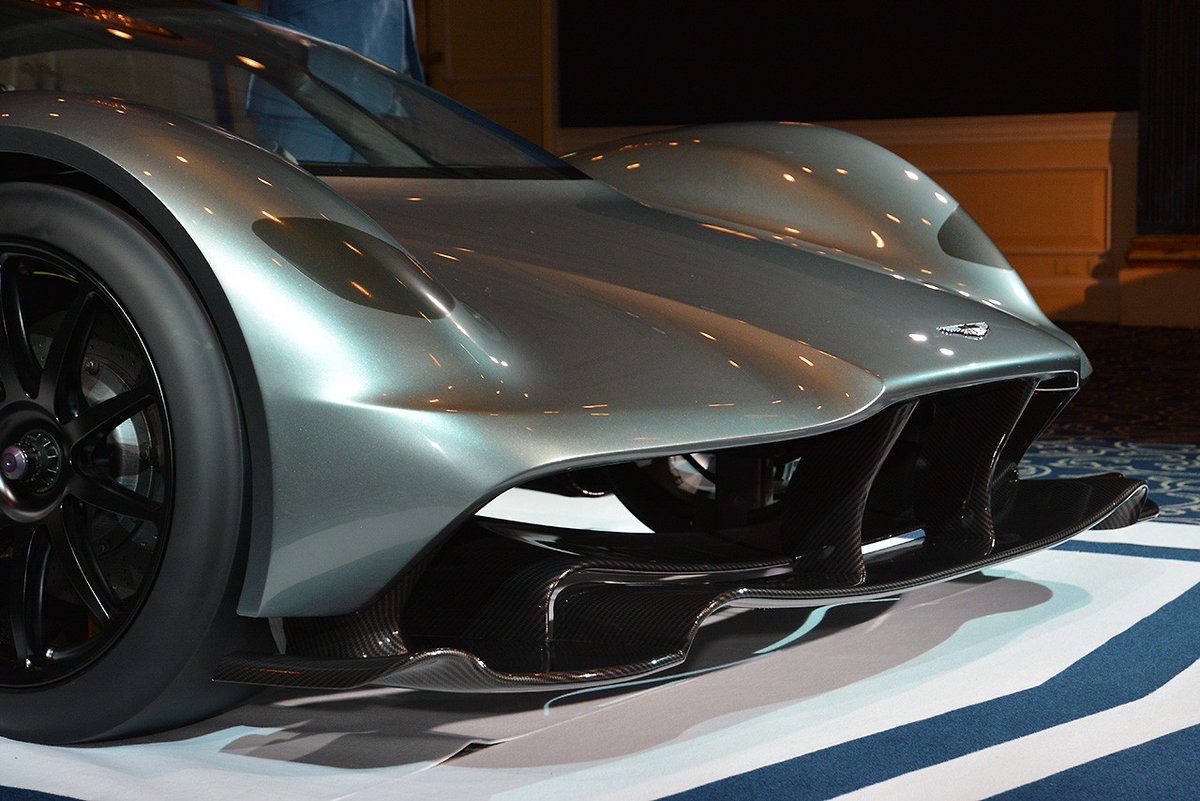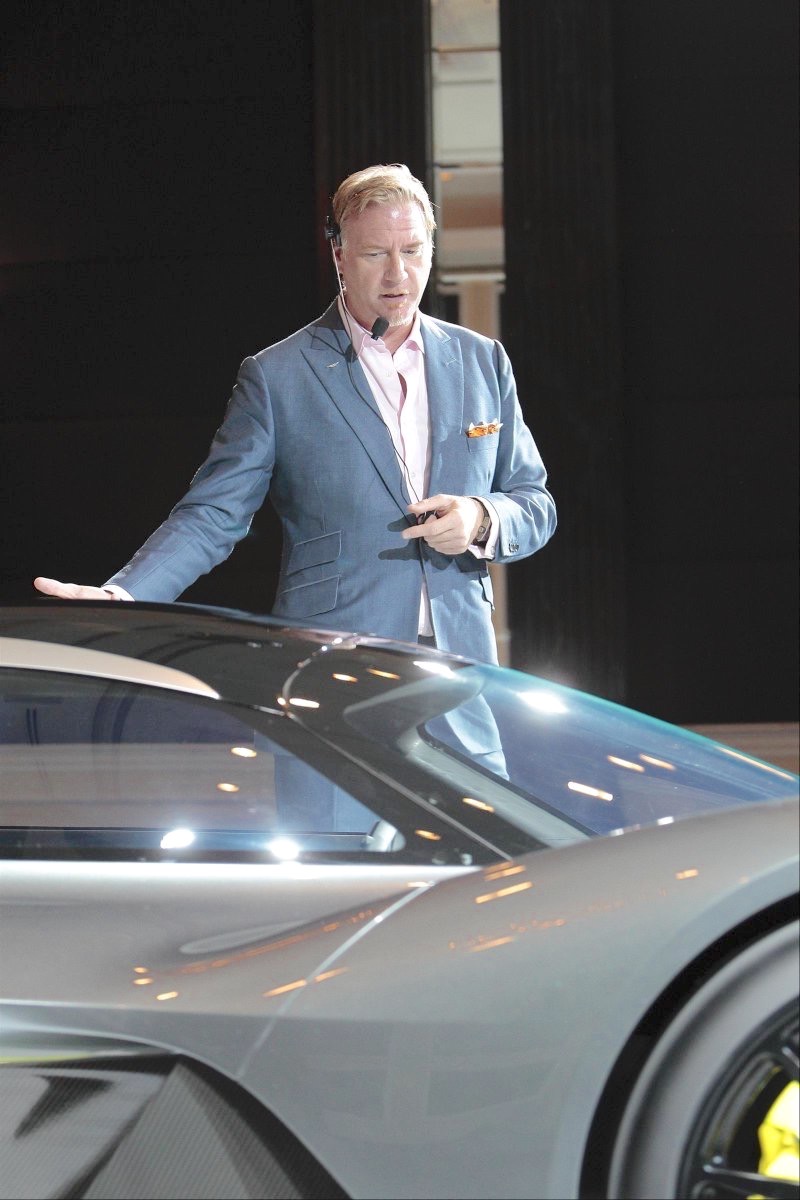Aston Martin Reveals Utterly Bonkers ‘World’s Fastest Street Car’
You’ll need $3 million to take home this 1,000 horsepower monster.


Aston Martin‘s claimed “world’s fastest car,” the AM-RB001, made its public debut today in Tokyo at a special event to show off this joint project between Aston and the Red Bull Formula One team.
The company also leaked some early tidbits about the $3 million, 1,000-horsepower V12 missile to Wall Street Journal auto critic Dan Neil, who attended the event. Acceleration? 0-to-200 mph in ten (!) seconds.

Cornering force? Four Gs of turning force for the track-only versions of the car, courtesy of the AM-RB001’s unprecedented level of grip-aiding aerodynamic downforce. By comparison, hot sports cars typically carve corners with the equivalent of just one G of turning force.
The result will be a car that circulates tracks like the mighty Spa-Francorchamps track in Belgium as quickly as the race cars from the 24 Hours of Le Mans, hence Aston’s stake on the claim it will be the world’s fastest street car.

Unlike most hyper-performance car, the AM-RB001 wears no conspicuous add-on wings to provide high-speed traction. Instead, the car’s body itself is the wing, with its force amplified by the “ground effect” of being able to suction itself to the road like a remora riding a shark. In this case, Neil reports he was told unofficially that the car produces 4,000 pounds of downforce.
In comparison to its expected 2,200-lb. weight, the car would theoretically be able to drive upside down on the ceiling at speed.

It achieves this by flowing air under the car faster than it goes over it, using carefully contoured surfaces. We can’t see the bottom side, but we can see glimpses of daylight under the nose where you’d expect there to be solid machinery.
This means the car is laid out like one of the Red Bull Formula One racers designed by team aerodynamic maestro Adrian Newey. The driver and (very snug) passenger sit nearly on their backs, with the feet in the air ahead of them. Think of reclining in a bathtub. This leaves space beneath for the air to do its work.

By making the air work hard underneath the car, it leaves the top surfaces free of fussy add-ons like wings. “Adrian and I hate big wings,” exclaimed Aston chief designer Marek Reichman to Neil. “Because the lower half of the car is doing all the mechanical work, the upper half offered more design freedom.”
For ground effect aerodynamics to work, it is critical that the car maintain a continuous position relative to the ground, with no bouncing around, or it could suffer a disastrous loss of downforce at an inopportune time.
The Aston Martin/Red Bull solution is to employ active suspension, which uses computer-controlled hydraulic suspension to keep the aerodynamic bodywork in perfect position at all times. Newey pioneered this technology when he was lead designer for the Williams Formula One team in the early ’90s.

Active suspension was banned from F1 for making driving the cars too easy, but there are no such spoilsport rules for hyper cars, so Newey is able to show the potential of this equipment on the Aston.
“Nothing remotely like it has ever been tried on a road car,” project engineer David King told The Journal. “The numbers we are getting in the simulation are amazing.”
Contributing to those amazing numbers is a 1,000-horsepower V12, in the best Aston Martin tradition. No overworked gas-sipping motor here, as in, say, the BMW i8.
Aston promises to start deliveries in early 2019, at $3 million apiece. The planned production run is 150 road cars and 25 track-only specials, for a total of 175 cars. Plus, of course, the car they’ll provide for use by Her Majesty’s Secret Service agent, Mr. Bond.
